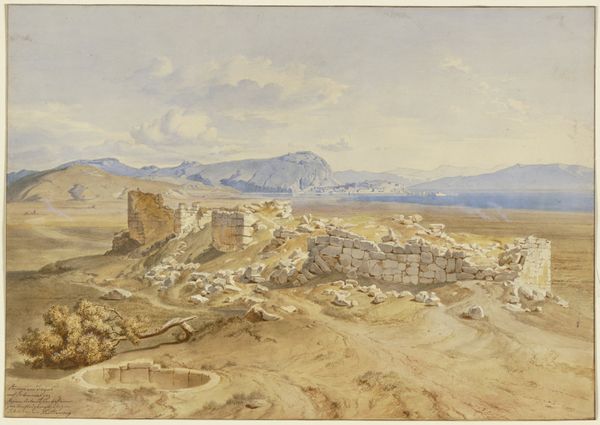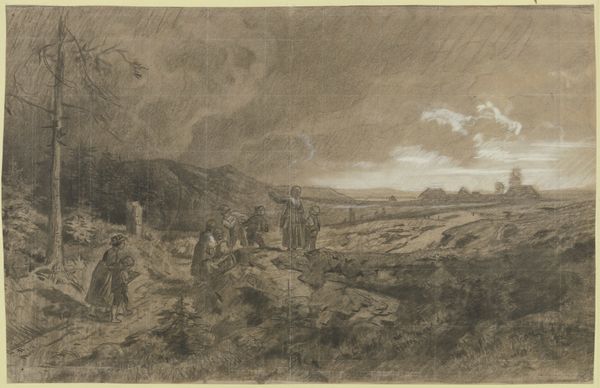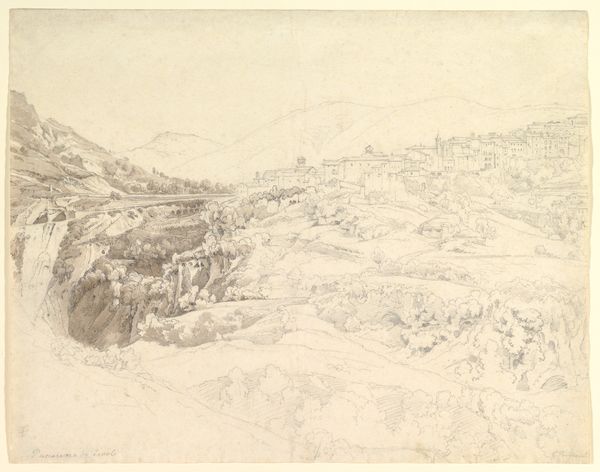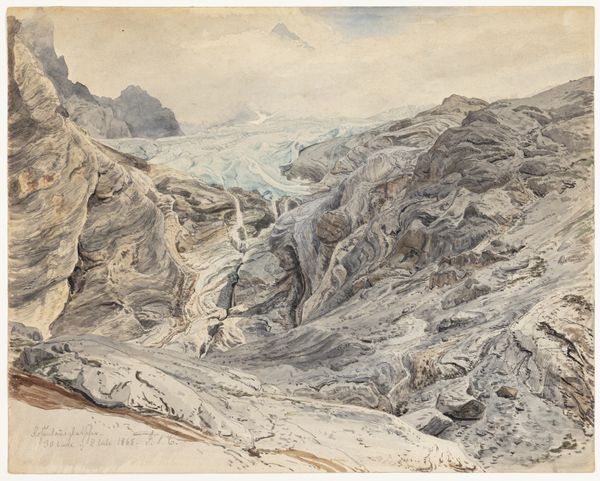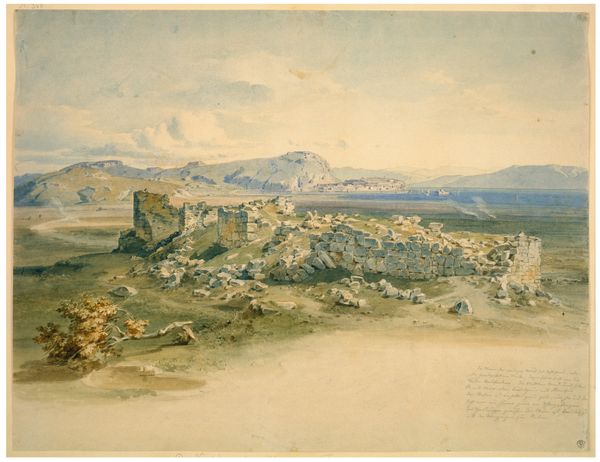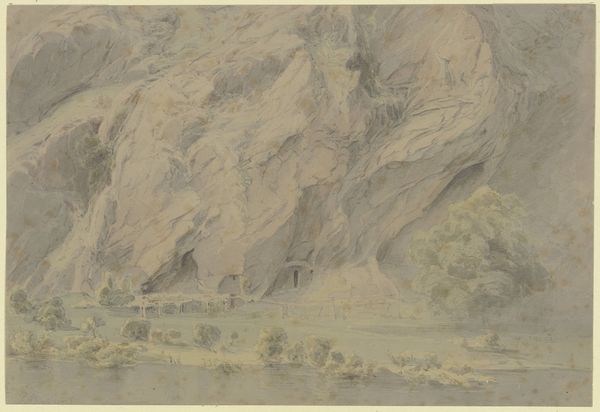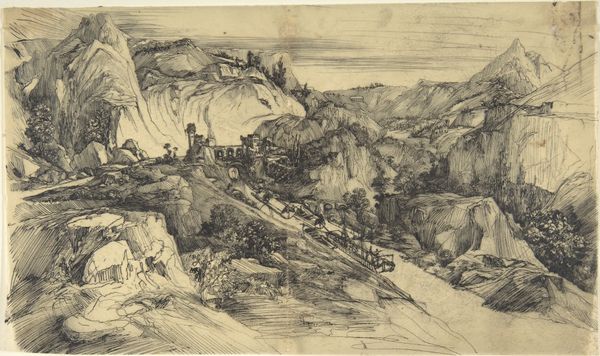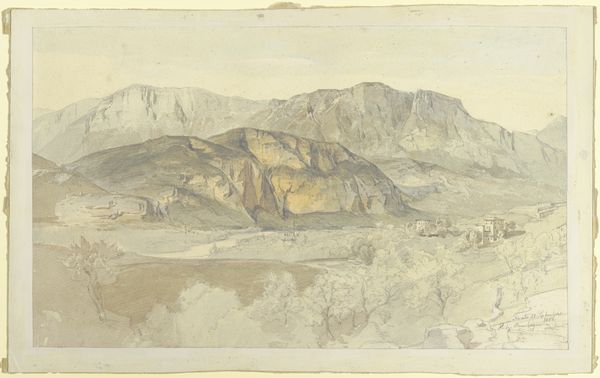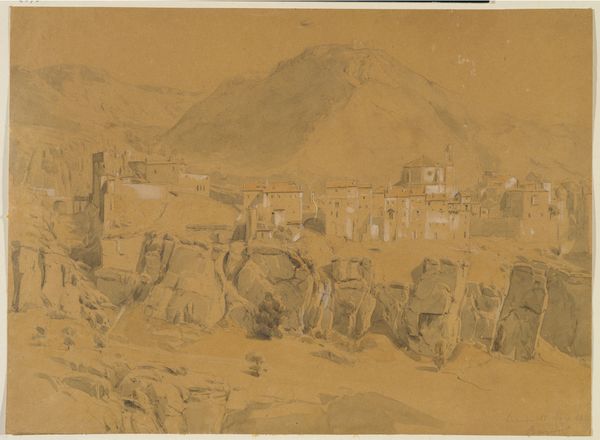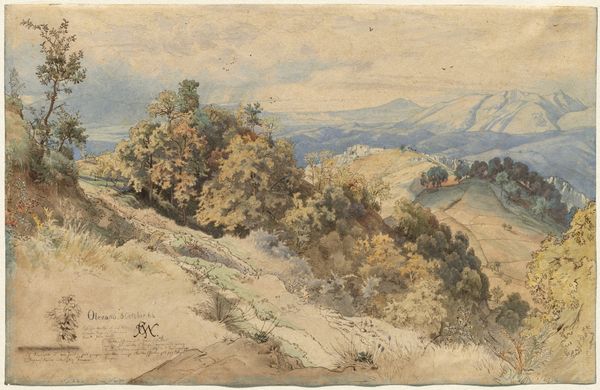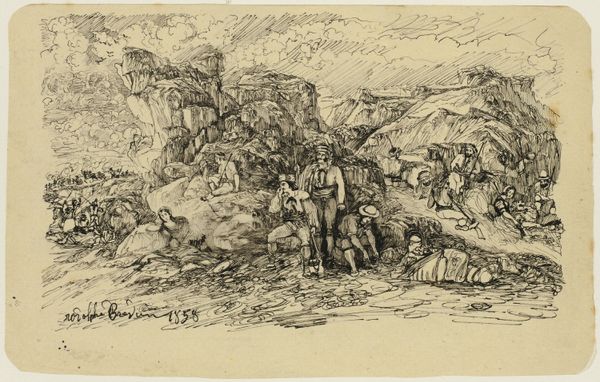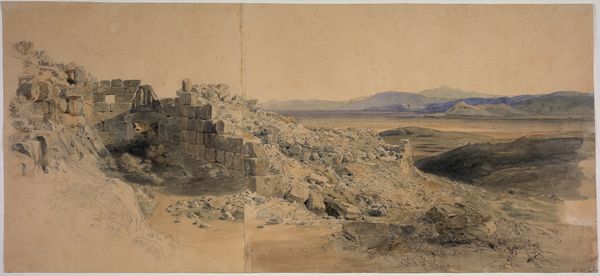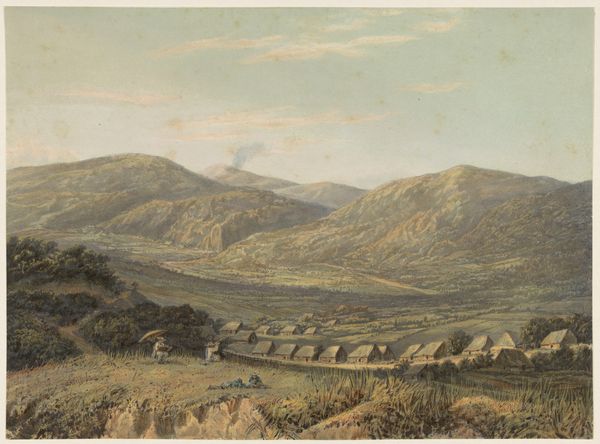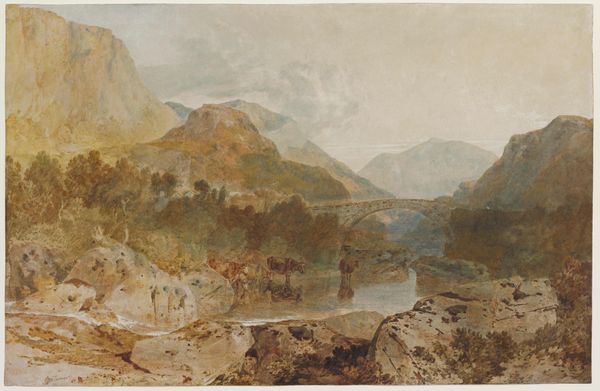
The Cliffs, Foilhummerum Bay, Valentia, the Point at Which the Shore-end of the Cable was Landed on July 22nd, 1865 1865
0:00
0:00
Dimensions: Sheet: 6 7/16 × 9 5/16 in. (16.4 × 23.6 cm)
Copyright: Public Domain
Curator: Looking at this Robert Charles Dudley watercolor from 1865, entitled "The Cliffs, Foilhummerum Bay, Valentia, the Point at Which the Shore-end of the Cable was Landed on July 22nd, 1865," I’m immediately struck by the chaotic energy. It’s bustling with figures, activity… Editor: It’s interesting that you describe it that way. For me, there’s an overwhelming sense of human industry— the sheer labor involved in the project being commemorated. What draws my eye is not just the watercolor paint, but the depiction of bodies, earth, rock and smoke—all fundamental materials reshaped by technology. Curator: Precisely! That sense of ‘making’ underscores the magnitude of the transatlantic cable project itself and I see that echoed throughout the composition. This watercolor isn't merely a depiction; it’s a representation of 19th-century ideals of progress and connection –the beginning of what some call "the Victorian Internet." What do you see? Editor: Well, I think framing it that way also obscures what progress *meant*, and *for whom*. How did this cable affect labor practices? Or change manufacturing timelines of the goods then transported to this remote beach. Those bodies we see are situated along the shoreline with hand tools in what, at least superficially, looks to be a somewhat celebratory scene… What processes have changed to make global-scale technology such as a trans-atlantic cable more accessible and who really is impacted by technological achievement such as the submarine telegraph cable laying of 1865. Curator: That's insightful. The very materiality evokes themes of labor. This landing was a multinational effort. Looking again through your lens, it provokes consideration of whose labor really matters here, who benefits from celebrating their accomplishment. Also it highlights how infrastructure influences geopolitical and social order. I am finding it relevant to my perspective now, as well. Editor: Right. It forces you to look more deeply not at simply what is illustrated, but at how material and process intersect with human labor in what looks to be, a fairly remote corner of the earth. And I think what it provokes in that question – how deeply intertwined they are is precisely the reason Dudley elected this moment as something to capture. Curator: I agree. Before our conversation, I wasn't really taking this into consideration. Editor: Right, it adds another layer of appreciation for Dudley's work. Seeing it in this context has reshaped how I view progress generally.
Comments
No comments
Be the first to comment and join the conversation on the ultimate creative platform.
